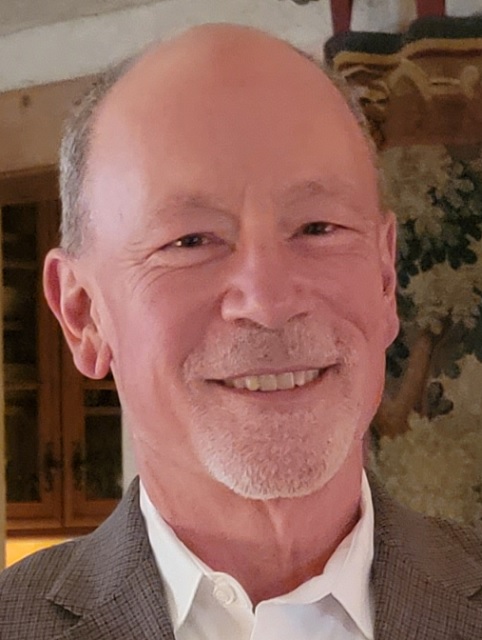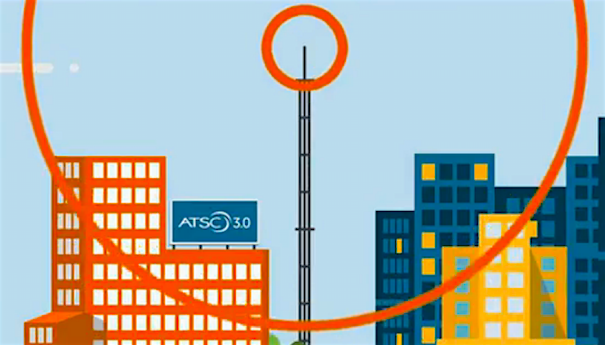ENG
Developments in electronic newsgathering proceeded in a predictable direction at NAB2007. They included new urgency regarding the 2GHz BAS relocation, the commercial availability of systems that blend computer file transfer protocol (FTP) with point-to-point microwave technology, HD ENG solutions and greater visibility of diversity receive systems that remove the need for live trucks in some instances.
Sprint Nextel came to NAB2007 with a simple message to broadcasters: Don't slow down. In March, the company filed a progress report with the FCC on the status of the 2GHz relocation project. In it, the company told the commission it would require a 12- to 24-month extension of the September 2007 deadline to complete the project.
According to Mike Degitz, the company's vice president of global development and spectrum management, the report and the company's plan to make a formal extension request this summer may give broadcasters the false impression that they have additional time to complete their microwave equipment inventories and negotiate frequency relocation agreements.
During an interview at NAB2007, Degitz said nothing could be further from the truth. The duration of the sought-after extension is based on work continuing without interruption. Any delay now would make it necessary to seek further extensions, something the telecommunications company does not want to do.
As of NAB2007, 26 percent of eligible TV BAS licensees had completed frequency relocation agreements. At its current pace, Sprint Nextel wants most broadcasters' deal packages submitted by the end of the year. So far, 3 percent of BAS licensees covered by the plan have installed all of their new digital equipment.
The company has spent $212 million on transmitters, receivers, antennas and control equipment.
ENG via IP
The professional video industry's #1 source for news, trends and product and tech information. Sign up below.
While the 2GHz BAS relocation project currently dominates the ENG landscape, it wasn't the only noteworthy development in electronic newsgathering at NAB2007. FTP file transfer from the field via microwave transmission advanced with broader commercial availability. With the rise of ENG formats like Panasonic's P2 that record files directly to a solid state medium, workflows in the field are changing. FTP transfer via ENG microwave is a natural extension of the file-based workflow.
Nucomm unveiled its Messenger IP encapsulator and decapsulator system to support remote file-based ENG workflows. The system offers IP transport in trickle and broadband modes. Trickle mode, which supports bit rates from 100kb/s to 1Mb/s, is used when live video is being transmitted concurrently. In broadband mode, almost all available bandwidth is devoted to IP traffic.
With the system, IP traffic is encapsulated into the MPEG stream from the MPEG encoder in the ENG transmitter so the resulting ASI stream consists of IP and video data. The system can use a station's ATSC signal to close the loop back to the ENG truck where data received by an ATSC receiver is fed to the Messenger IP decapsulator, which routes IP data from its Ethernet port.
Microwave Radio Communications (MRC) introduced the MTX5000 ENG edge access transmission system that adds an IP encapsulation and return system to a multimode modulator supporting DVB-T-COFDM, DVB-S and S2, single carrier, LMS-T, FM and VSB. The system can use a wireless broadband telecommunications service for a data return link from the TV station to the field or a data return link channel when it becomes available. The system supports simultaneous transmission of HD or SD and streaming of video files via IP.
Broadcast Microwave Services (BMS) showed the TCII Media Router System, which can create a virtual IP network for ENG news vehicles using a Truck-Coder II digital microwave system. The media router, with the company's Media Router Gateway, allows reporters in the field to interface with news servers back at the studio via a LAN connection. File transfer speeds vary to a maximum of 4Mb/s.
N Systems (NSI) added another twist to the IP/ENG connection with the introduction of 1 Touch. The system allows news desks to establish an IP connection with moving or stationary ENG vehicles via an EvDO broadband connection to manage field resources and share data. When an ENG vehicle is parked and its mast extended, 1 Touch makes it easy for the studio to take control of its ENG transmitter, antenna positioning and any other piece of equipment, like a tape deck or router, with an IP connection.
Diversity receive and HD ENG
Imagine covering a story live without sending out an ENG truck — maybe even putting a news videographer on the back of a motorcycle as a driver scoots through congested urban streets to the scene of a story. Once on-site, the news photographer transmits to a pre-established network of pickup antennas — much like cells in a cellular phone network — and the contribution is turned around to the station. That's one of the ideas behind new HD and SD diversity receive systems shown at NAB2007.
Nucomm introduced the NewsHub cellular diversity receive system. Each system comes with four ASI inputs with loop-through packet switching of as many as four cellular receive sites. Multiple systems can be cascaded to expand coverage areas.
MRC's solution was the new DRS4000 central receive diversity system, which supports single- and multiple-site architectures. With multiple receive antennas, the system relies on an advanced maximal ratio combining technology to add signals from each antenna and automatically balance gain. These sites can be combined to extend diversity reception coverage to an entire metropolitan area.
At NAB2007, there were also several significant developments in camera-mounted HD transmitters and systems. JVC teamed with BMS to offer an ENG HD camera, lens, camera-back microwave transmitter and receiver. Called the ProHD Libre, the system provides native 60P HD capture via JVC ProHD 200 series camera with built-in MPEG-2 Super Encoder.
The BMS HD Mini-Coder camera-back transmitter accepts the camera's compressed signal at 20Mb/s via the IEEE-1394 connection and modulates it at 64-QAM. It then transmits COFDM on an 8MHz pedestal.
Global Microwave Systems unveiled its answer to HD ENG on the go in the form of the Messenger 2 Transmitter (M2T), an MPEG-4 AVC H.264 wireless camera-mount transmitter. The transmitter supports video resolutions from SD to 1080p HD. The M2T offers selectable system latency as low as 44mS or less, and maximum bit-rate throughput of 50Mb/s. It supports COFDM with QPSK, 16-QAM or 64-QAM modulation. Additionally, the transmitter is available as a rack kit and a standalone digital transmitter.
RF Central showed its new RFX-CMT-HD, an HD camera-mounted transmitter, in action in the Central Hall. The wireless HD transmitter relies on MPEG-2 video encoding and offers adjustable latency to 50ms. The HD transmitter mounts between the battery and the camera interface plate. It uses COFDM DVB-T modulation and QPSK, 16-QAM and 64-QAM modulation modes. The RFX-CMT-HD supports 1/2, 2/3, 3/4, 5/6 and 7/8 FEC modes.
Link Research introduced its L1500 wireless camera transmitter. The base unit is an SD wireless camera transmitter that can be converted to support HD operation with a simple software upgrade. The L1500 replaces the company's existing range of 2GHz, 3.5GHz and 7GHz wireless camera systems.
Fade to black
For the next few years, the 2GHz TV BAS relocation project is likely to remain the biggest ENG issue because so much rides on its successful completion. With only 3 percent of eligible licensees having all of their equipment, it's difficult to imagine that the commission will not extend the September 2007 deadline, which means the process will go on.
However, even as the industry's 2GHz analog equipment is swapped out for digital systems to support the new 12MHz channel scheme, other developments in the broadband and satellite market may ultimately overshadow this transition. For example, transmission of video files via broadband network is in no way inextricably tied to ENG microwave technology as shown by BMS, MRC and Nucomm.
In the long run, field acquisition via WiMAX and BAGAN may make future broadcast engineers wonder what all the fuss was about regarding the 2GHz BAS relocation.
Phil Kurz writes several Broadcast Engineering e-newsletters, including ENG Update.
Phil Kurz is a contributing editor to TV Tech. He has written about TV and video technology for more than 30 years and served as editor of three leading industry magazines. He earned a Bachelor of Journalism and a Master’s Degree in Journalism from the University of Missouri-Columbia School of Journalism.

